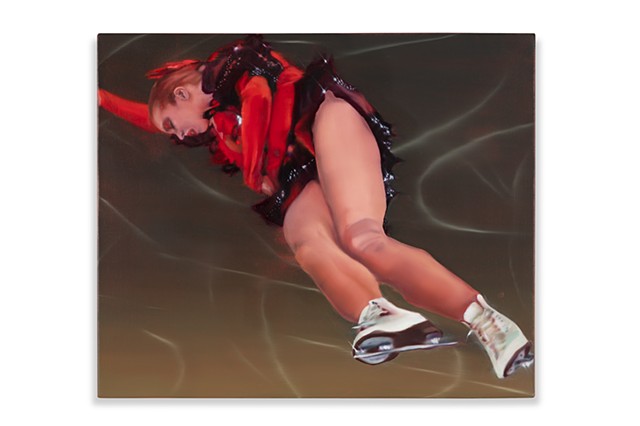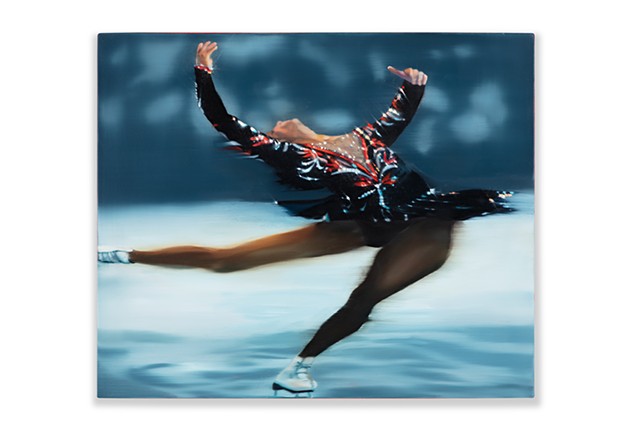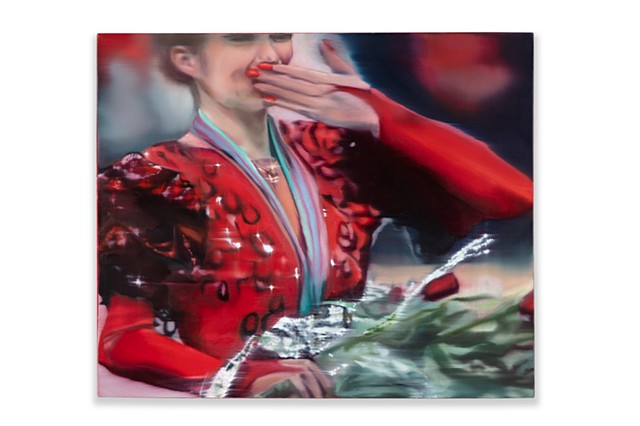Battle of the Carmens
It’s an early morning in 1988. Katarina Witt and Debi Thomas are at the center of a media-driven rivalry at the Calgary Winter Olympics, their shared choice of Bizet’s opera, Carmen, fueling the narrative. Carmen, the doomed heroine, is a woman who craves love but breeds obsession and jealousy, her defiant allure culminating in a knife to the heart outside a bullring. First, Witt takes the ice, her performance dramatic, character-driven. Before she begins, the announcer predicts: I think the Carmen we’re going to see is a flirtatious one.
Debi Thomas follows with a program built on strength and musicality but receives a harsher assessment: Not her best moment… and she knows it. She becomes the first Black athlete to win a medal at the Winter Olympics yet the focus remains on comparison. The ice rink and the bullfighting arena collapse into a single space, where muscle and costume fuse and competition entangles with spectacle. Witt and Thomas spin inward, their forms shifting between past and future in slivers of cadmium red, both bound to Carmen’s fate.
Later, both downplay any real rivalry. It was never about them, they suggest, reframing it as a clash in public perception between competing ideas of what a skater, a performer, and a Carmen should be. I tried to tell the story, Witt says. Thomas states in a strangely detached reflection: Some people say ‘well, she dies at the end,’ but I mean, I don’t know, maybe because I’ve never watched either. In this moment, her loss becomes something fluid, slipping between character and self. Carmen’s death and Thomas’ loss are temporarily suspended.
It’s an early morning in 1988. Laurie Dann is moving toward a violent breaking point. Her final day will be marked by a failed arson, failed bombing, failed poisonings, failed hostage attempt, a school shooting, and her own suicide.
Her obsessive-compulsive behaviors, first appearing in childhood, had intensified in the years leading up to this. On her birthday, her husband gave her flowers and a pink sweatsuit; objects she latched onto, wearing the sweatsuit daily as if it could prevent him from leaving her and keeping the flowers long after they wilted.
After her marriage ends her actions escalate. Consumed by personal and professional failure she fixates on revenge. The details of her last days are excessive, disjointed, almost too much to be real. They blur into something closer to legend, a hypnotic sequence where fact is impossible to pin down.
Ellen Hanson’s Battle of the Carmens mirrors this collapse of reality, using layers of distortion to explore how stories are shaped by their repetition. Her paintings don’t just compare events; they enact the way history warps in retelling. Working on jersey fabric, Hanson pulls and stretches it before fully rendering the scenes. Fabrics fill the gaps left by these shifts, creating montaged scenes within scenes. A ‘Richter blur’ ghosts reference images like an unstable VHS caught mid-pause. Stretched and manipulated, the images merge into meta-narratives that reveal relentless cycles of comparison, the tension between internal expectations and external judgment, and the looming threat of unraveling under the weight of an unattainable ideal.
The two Carmens skate between reenactment and premonition, where death is both symbolic and literal. In a choreography of collapse, Laurie Dann’s violent final act is split and replayed by the Carmens, bleeding into Debi Thomas’ last bow. A bouquet passes between a pink tracksuit and a costumed Carmen.
—Marie Heilich






















